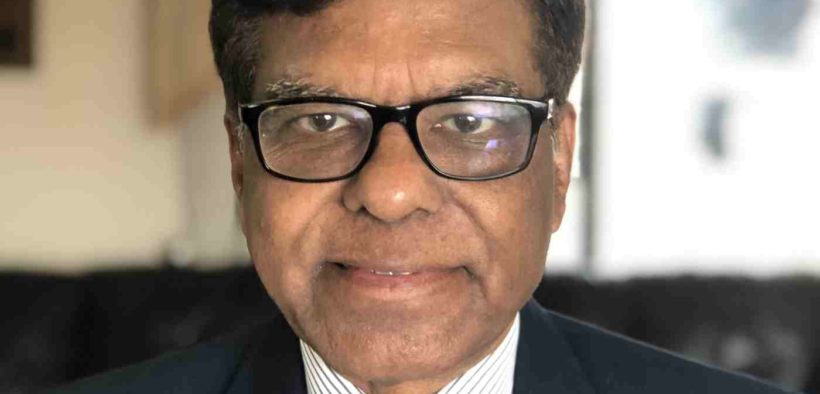Early Detection Is Vital

Dr. V K Gupta, Medical Director of the Rajkot Cancer Society, elaborates on the need to build awareness, prevent cancer and to ensure that early diagnosis becomes the norm
By Dipna Kirpalani
You have developed the Gupta-Mathur Devices that are used in many hospitals across India. Could you elaborate on this innovation?
There are mainly two types of therapy: teletherapy and brachytherapy. In teletherapy, the light falls on the body from a distance, whereas in brachytherapy, the source is kept in contact with the body. Brachytherapy is again differentiated into two—intracavity and interstitial brachytherapy. In intracavity, the device is placed within a cavity such as a bladder cavity of the uterine cavity. In interstitial therapy, the source is kept within the tissue of a lumen, like the food pipe, for instance. In 1986, I was awarded a fellowship from Leeds University and the thought came to me to implement the same treatment methods back in India. But for this, I needed to get the materials imported to India, which was a difficult task in those times. And also there was also a need for radium and the machine cost for cutting the radioactive wires came to around INR 3 lakh at the time. So developed my own device for just INR 60,000. Soon, there was a huge demand for it and that is how interstitial brachytherapy was introduced in India for the first time. With this innovation, remote afterloading became possible and only the tumour tissues were targeted while reducing the damage to the nearby cells. It helped in eliminating the hospital staff’s radiation exposure.
You have worked abroad extensively. What are the chief differences you see between the ways society approaches the diagnosis and treatment of cancer in India and abroad?
There is a difference in the pattern of diseases itself because of the lifestyle. For instance, the use of tobacco is rampant in India. So we find a lot of tobacco-induced cases of cancer in India; we do not see the same in other countries. Patients in India also have a lack of awareness about the disease and do not often submit themselves for a medical examination when symptoms start. Most of the time, a patient sees a doctor during the last stages of the disease, which diminishes his or her chances of recovery. In other countries, at least 6 or 7 people out of 10 are cured of cancer, whereas in India not more than 3 or 4 out of 10 survive the disease. This difference in the survival statistics is not due to the difference in the treatments offered but rather in the lack of awareness among people.
As the Medical Director of the Rajkot Cancer Society, how would you describe its growth?
I joined the Rajkot Cancer Society in 1979 as a radiation oncologist It was a humble initiative begun by a group of philanthropists and has grown a lot since then. An outpatient department was started in 1975, and we organized ourselves into surgical oncology, medical oncology, and radiation oncology. We diagnose an average of 5-6 surgical oncology patients in a day, 150 in radiation oncology and 50-60 in chemotherapy and medical oncology. Of the 6,500 patients who have signed up with us, around 5,000 tested positive for cancer, 66 per cent of whom were males.
Are there any social causes you hold close to your heart?
One of the most important things in cancer treatment is early detection. Recently, we started a special wing for cancer detection called Dr. Kundalya Cancer Prevention Foundation, under the auspices of Rajkot Cancer Society. This was begun with an aim to encourage people to be aware and to look out for early symptoms of cancer. For example, in oral cancer, even a tiny blister or ulcer in the mouth could be cancerous and so it is highly recommended that one gets it tested before it is too late. In the early stages, it is easier to intervene in the disease and interstitial brachytherapy might prove to be the most effective and without side-effects. There is a widespread notion that if a person is diagnosed with cancer, it will definitely lead to death. We have to understand that acceptance is important to the treatment of cancer; the patient’s willingness also matters. Similarly, to detect cervical cancer, the Pap smear test needs to be done. But most women are unwilling to take the test. Most cancer cases can be diagnosed visually and confirmed by doing a biopsy. But due to lack of awareness and acceptance, people resist any sort of tests. If a diagnosis does not happen on time, no high- end treatments will be able to help the patient.

One of the stated visions of the Rajkot Cancer Society is to prevent all types of preventable cancers. What are the steps being taken by the institute in this regard?
One thing we’ve been keen on doing for the past 14 years is conducting anti-tobacco awareness programs for children. We did a survey among schoolchildren and found that 30-35 per cent of them were under the influence of tobacco and that they brought cigarettes to class. We brought in cancer survivors to interact with them in order to make them realize the consequences of tobacco intake. We believe our efforts are helping in reducing the number of children who use tobacco. Besides this, we have been working among factory workers as well for the last eight months. We have been carrying out these awareness programs free of cost and we have witnessed a positive response from those attending the programs.
How can India step up to the challenge of creating indigenous and affordable drugs to fight cancer?
I believe it will take some time before India establishes itself in such a manner. From research to the point that a drug reaches a patient, the process takes at least 10-20 years. That is how extensive the funding requires to be. But in the last five years, the pharmaceutical sector in India has seen considerable growth. This means we will have stable financial support for research. So even if it is time-consuming, we are still hopeful of having full-fledged research organizations across the country.
How have things changed in the field of oncology since you started your career?
When I came to this hospital in 1979, there used to be fewer people below 50 years diagnosed with oral cancer. But today, we have patients as young as 20 or 25 years old, suffering from oral cancer due to substance abuse. Another major thing is the technology that has changed over time. We now have hundreds of drugs for treating cancer whereas we had only 5 or 6 drugs back in the day.
With so many things on your plate, how do you strike a work-life balance?
I am happiest when I’m at work and I have come to a point where I enjoy my life wherever I am. I also like listening to music
ALSO READ ABOUT
















